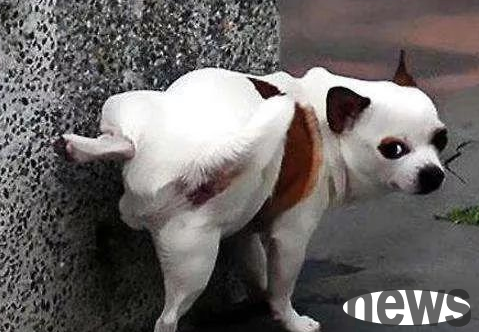There are many types of dog stones, and there are many causes of dog stones. Generally, you must first confirm the type of disease through various tests, and then find out the cause of the dog stones to prevent the recurrence of the disease, otherwise the chance of recurrence of the disease is very high.
1. What is urinary tract stone in a dog?
Any stone deposits in the urinary system of a dog such as the kidney, ureter or bladder are called urinary tract stones.
The urinary system consists of the kidney, ureter, bladder and urethra. The kidneys resemble broad beans, located above the dog's waist and close to the back. The ten thousand ways to transport urine: the kidneys make urine, and then transport urine to the bladder through the ureter. The bladder can store urine to a certain amount and excrete it from the urethra.

2. Causes of karean urinary tract stones
Several common canine stones are calcium oxalate, calcium phosphate, cystine, magnesium phosphate salt and uric acid stones. The causes of each stone are different.
1. Calcium oxalate: Generally speaking, it can be divided into 4 reasons. Excessive calcium ions in the urine, excessive oxalate in the urine, excessive citrate in the urine, and lack of crystal statin. There are factors that inhibit crystal formation in normal urine, which can reduce the production of crystals and stones in urine.
2. Calcium phosphate: such as hyperthyroidism, abnormal kidney filtration function, excessive vitamin D intake and nephritis, etc., may cause the occurrence of this stone.
3. Cystine: There are low concentrations of cystine in normal blood, which can be dissolved in alkaline urine and insoluble in acid urine.
4. Ammonia phosphate salt: It can be divided into two reasons: infectious and non-infectious. When the urethra is infected, the urine is prone to strict magnesium phosphate salt after various chemical mechanisms: instead of infectiousness, it is sufficient to cause such stones due to diet or metabolic abnormalities.
5. Urate: A normal body can convert uric acid to allantoin. However, if the concentration of uric acid in the blood or in the feces is too high, the body cannot completely convert, and urate is easily produced. In addition, if the dog suffers from congenital blood vessel shunt of the liver, this type of stone is also prone to occur due to poor liver function.
3. Clinical symptoms of kata urinary tract stones
1. Different clinical symptoms are found according to the location of kata urinary tract stones. Some may experience drip urine, prolonged urination time, hematuria and urinary incontinence.
2. Long-term urine excretion disorders will further cause problems such as vomiting, loss of appetite and decreased mobility in the dog.

4. Diagnosis methods of karean urinary tract stones
1. Detailed blood red and white blood cells test, urine test, urine residue test, urinary tract x-ray test and ultrasound test are generally common test methods;
2. Further tests include intravenous renal pelvis photography, etc. The stones collected or stones in urine residue can be analyzed in laboratory to understand the ingredients.
5. Treatment methods for kata urinary tract stones
1. In terms of treatment, the treatment method needs to be determined based on the location and type of the stone. Internal medicine and surgery are the most common methods.
2. Before internal medicine treatment, you should first understand the possible types of stones through urine residue test, and then decide on the choice of medicine.
3. Surgery is usually used when there is already severe obstruction or when the dog has severe dysfunction of urination.
